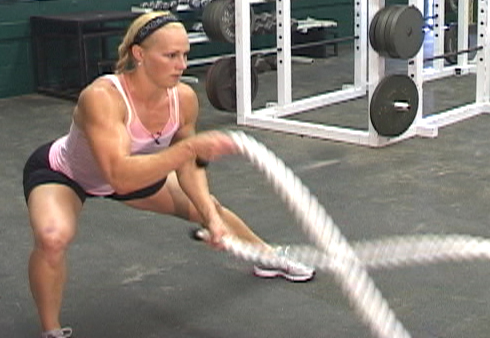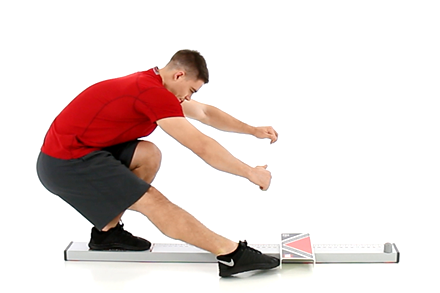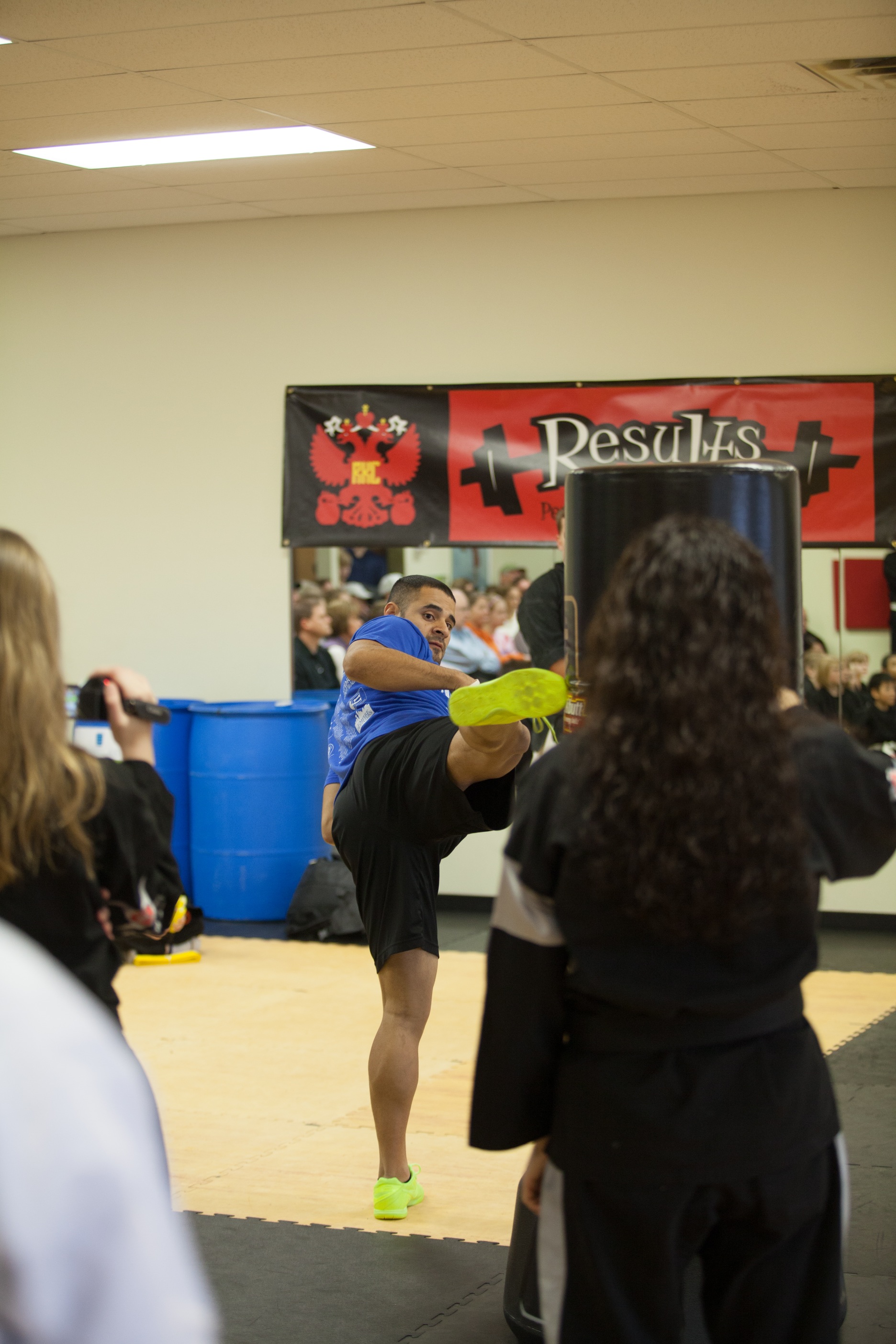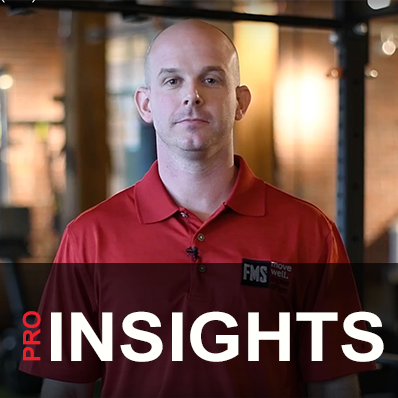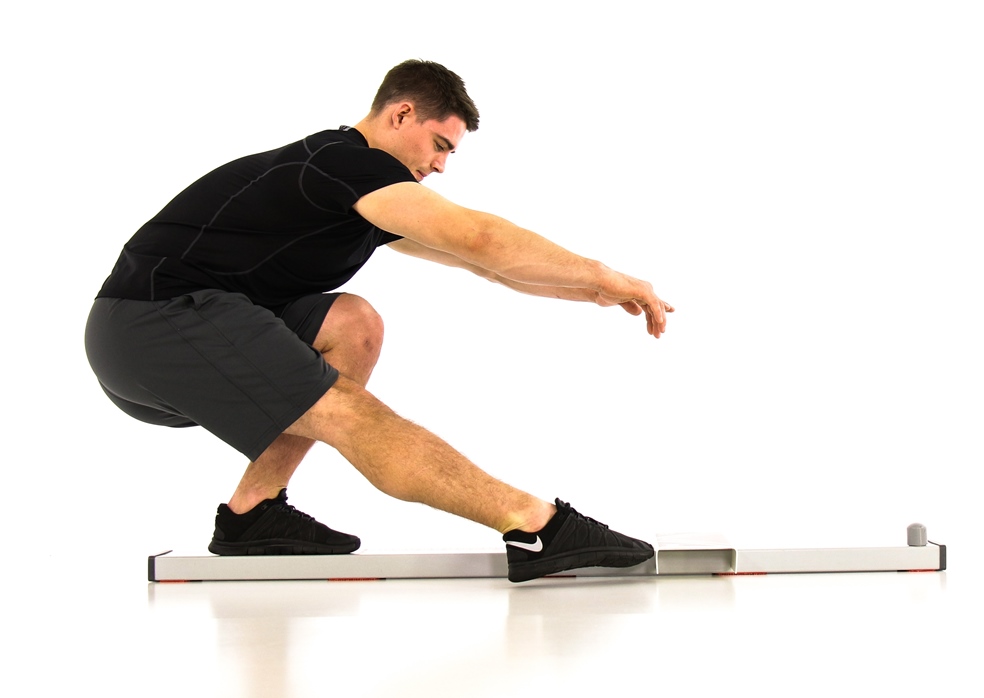The Finer Points of the Quadruped Position
Written by Mike Perry FMS
.jpg)
Quadruped.
All fours.
Hands and knees.
Call it what you want - there are probably more names for this position – either way, the devil is in the details.
If you can gain a true understanding of the quadruped position, it will be an absolute game-changer when it comes to helping you or your clients re-establish reactive stability, trunk stability and even hip stability.
Exercises such as Quadruped Diagonals (or bird dogs) start from quadruped and they have been a staple in lower back rehabilitation. Dr. Stuart McGill uses the bird dog as one of his “Big 3” exercises for lower back health and training core stiffness. In the FMS system, we utilize the quadruped position to improve static motor control when our goal is to improve rotary stability. Exercises like the Quadruped Rock with Core Activation and Quadruped Diagnonals start in quadruped and are a staple in the FMS curriculum.
Like any exercise, the correct starting position dictates the outcome so here are some vital areas to pay attention to when setting up in the quadruped position.
- Ankle position
- Joint alignment in the limbs
- Finding neutral - lumbopelvic positioning
- Thoracic spine
- Scapular
- Cervical spine
- Breathing
For an untrained individual, owning this position is very important. This is their “home base” and you should incorporate many exercises that originate from this position. Drills like bird dogs, hip extensions, shoulder taps, posterior stability ball rocks, short lever planks and bear crawls all start from the quadruped position.
So let’s nail down some details when it comes to setting up the quadruped position.
Ankle position
There are two ankle positions to consider when setting up the quadruped position, plantarflexion and dorsiflexion. Each variation is unique and your selection should be based on your desired outcome.
If your goal is to focus on reactive stability in the hip, start in the plantarflexed position. This position doesn’t require ankle dorsiflexion and tends to be more comfortable for people unfamiliar with the quadruped position. If you lift your right leg off the ground and keep your left knee directly under your left hip, this provides some light compression in the hip joint. This is an ideal position to develop reactive stability in the hip. By simply stacking the joints correctly and not implementing any feed forward tensioning techniques, the hip stabilizers will start to fire.
If you, or your athlete, has adequate ankle dorsiflexion and extension in the great toe, a dorsiflexed ankle is another viable option. By loading the toes into extension, you can utilize the stiffness of the plantar fascia for stabilization. This is fantastic for foot strengthening and maintaining extension of the toes. This is also the start position for bear crawls.
Joint alignment in the limbs
As you set up the quadruped position, make sure you are vertically stacking the joints and keep your arms and legs parallel.
For the lower body, aim to keep the knees directly underneath the hips. This position provides an optimal starting point in the quadruped position. For the upper body, aim to keep the shoulder, elbow and wrist in a straight line. This alignment is ideal for most people and should be maintained as you introduce any external loading or perturbations.
Finding neutral
Brett Jones, lead FMS instructor came up with a perfect analogy to find a neutral lumbopelvic position. The story of Goldilocks and the three bears works perfectly when we are trying to find the “just right” position with each client. The concept is covered in the live FMS level 2 course.
For those of you unfamiliar with the story of Goldilocks, here is a quick excerpt:
Once upon a time, there was a little girl named Goldilocks. She went for a walk in the forest. Pretty soon, she came upon a house. She knocked and, when no one answered, she walked right in.
At the table in the kitchen, there were three bowls of porridge. Goldilocks was hungry. She tasted the porridge from the first bowl.
"This porridge is too hot!" she exclaimed.
So, she tasted the porridge from the second bowl.
"This porridge is too cold," she said
So, she tasted the last bowl of porridge.
"Ahhh, this porridge is just right," she said happily and she ate it all up.
In short, Goldilocks found the “just right” porridge by experiencing porridge that was too hot and too cold. They were extreme opposites.
We can take this principle and apply it to help you and your clients find a neutral spine.
If you go into a full anterior tilt, let’s consider that “too hot”. If you are in a full posterior tilt, that would be “too cold.” If we find the middle or neutral, it’s “just right”. This is a quick and simple way to find a neutral lumbar spine, appropriate when you’re setting up in the quadruped position.
Thoracic Spine
We can use the exact same principle as above in order to find neutral for the thoracic spine. The simplest way to find “neutral” is to perform some cat/camels in quadruped, find the spot that is “just right,” versus too hot or cold. The “just right” position is our home base.
Scapular Positioning
Once the thoracic spine position is set and the hands are directly underneath the shoulders, it’s time to work on the proper scapular position.
Again, we’re looking for a natural scapular position in quadruped. We should not see any scapular retraction, elevation, or winging in a healthy, functioning scapula.
By actively pushing your hands into the floor, you can help stabilize the shoulder girdle via joint compression. This will slightly protract the scapula and also aid in providing some stiffness in the torso.
Cervical Spine
A neutral cervical spine is optimal. Keep thinking of the Goldilocks principle where the key is to find the sweet spot.
Look at basic cervical ROM for each individual and go from there. I’d start by quickly screening cervical flexion, extension, and rotation. Once you see the client’s range of motion, you can find neutral and start from there.
Again, this is home base and this positioning should be maintained as you add in exercise progressions, starting in the quadruped position.
Breathing
In my experience, this is the area where most people need improvement. I would argue that most people have some compromised breathing patterns and cannot breath with their diaphragm.
In a perfect world, all clients would primarily breathe via their diaphragm in quadruped and not allow their secondary and tertiary breathing muscles to do the job of the diaphragm.
If you see your client holding their breath and notice excessive tension their neck musculature (SCM, scalene, upper traps) you may need to spend some more time coaching and cueing them into the optimal position.
If you cannot breath properly in a position, you do not own it.
Programming considerations
Once your client can get into their proper quadruped position, its time to challenge it. The first step is performing single limb lifts. Once in quadruped, lift the right arm lightly off the ground. Maintain your overall posture and don’t stray from home base. Start with :10 to :15 isometric holds then move to the left arm. You can follow the same progression with the lower body. Lift one leg, own the position then switch to the opposite side. Once you own a :30 isometric hold, you can work through each limb in more of a dynamic fashion.
Here is a quick example:
Right arm- hold for :15
Left leg- hold for :15
Left arm- hold for :15
Right leg- hold for :15
This is no exact dynamic sequence that you need to follow, just make sure that whenever you lift a limb, you maintain posture. Once you own single limb lifts, the next step is quadruped diagonals or bird dogs. I like to start with a similar sequence. We start by lifting opposing limbs just slightly off the ground and holding the position, once we own this isometric hold, progress onto full bird dogs.
Here is a quick example:
Bird dog isometric holds- :30 on each side
Dynamic bird dogs- :20 per side
As far as progressions go, you are only limited by your creativity, just make sure that you stick to the principles of the quadruped position. Own the starting point and slowly progress from there.
The quadruped position is incredibly powerful when trained correctly. Like any position, there are nuances that often get overlooked. Just because some of this seems simple, it doesn’t mean you should neglect the finer points. Don’t skip steps.
Pay attention to your setup, don’t rush, and always aim to put your clients in a position that challenges their ability but does not overwhelm them.
 Mike is the founder and owner of Skill of Strength, a training facility located in Chelmsford, Massachusetts. In his fourteen plus years as a Personal Trainer and Strength and Conditioning Coach, he has trained clients of all ages and abilities, including athletes represented in MLS, NFL, MLB, UFC, Bellator MMA, CES MMA, and several other MMA promotions in New England. He also trains and competes in Brazilian Jiu Jitsu under Raphael Carneiro at Fenix BJJ Lowell. Mike works for StrongFirst as a Senior Instructor and barbell instructor. As Senior Instructor, he leads teams of other instructor candidates during StrongFirst certifications and runs one-day barbell and kettlebell courses at Skill of Strength and other gyms
Mike is the founder and owner of Skill of Strength, a training facility located in Chelmsford, Massachusetts. In his fourteen plus years as a Personal Trainer and Strength and Conditioning Coach, he has trained clients of all ages and abilities, including athletes represented in MLS, NFL, MLB, UFC, Bellator MMA, CES MMA, and several other MMA promotions in New England. He also trains and competes in Brazilian Jiu Jitsu under Raphael Carneiro at Fenix BJJ Lowell. Mike works for StrongFirst as a Senior Instructor and barbell instructor. As Senior Instructor, he leads teams of other instructor candidates during StrongFirst certifications and runs one-day barbell and kettlebell courses at Skill of Strength and other gyms
Related Resources
-
FMS Strategies for Businesses
Posted by Mike Perry
-
Slide Box Tutorial
Posted by Lee Burton
Please login to leave a comment
2 Comments
-

-

Carol Link 10/22/2020 7:37:49 PM
I sometimes feel like I am so picky with my patients but then they feel the results or going slow and controlled. It is so powerful when my patients are cued to the detail like you have here. The breathing is something I need to watch more.




